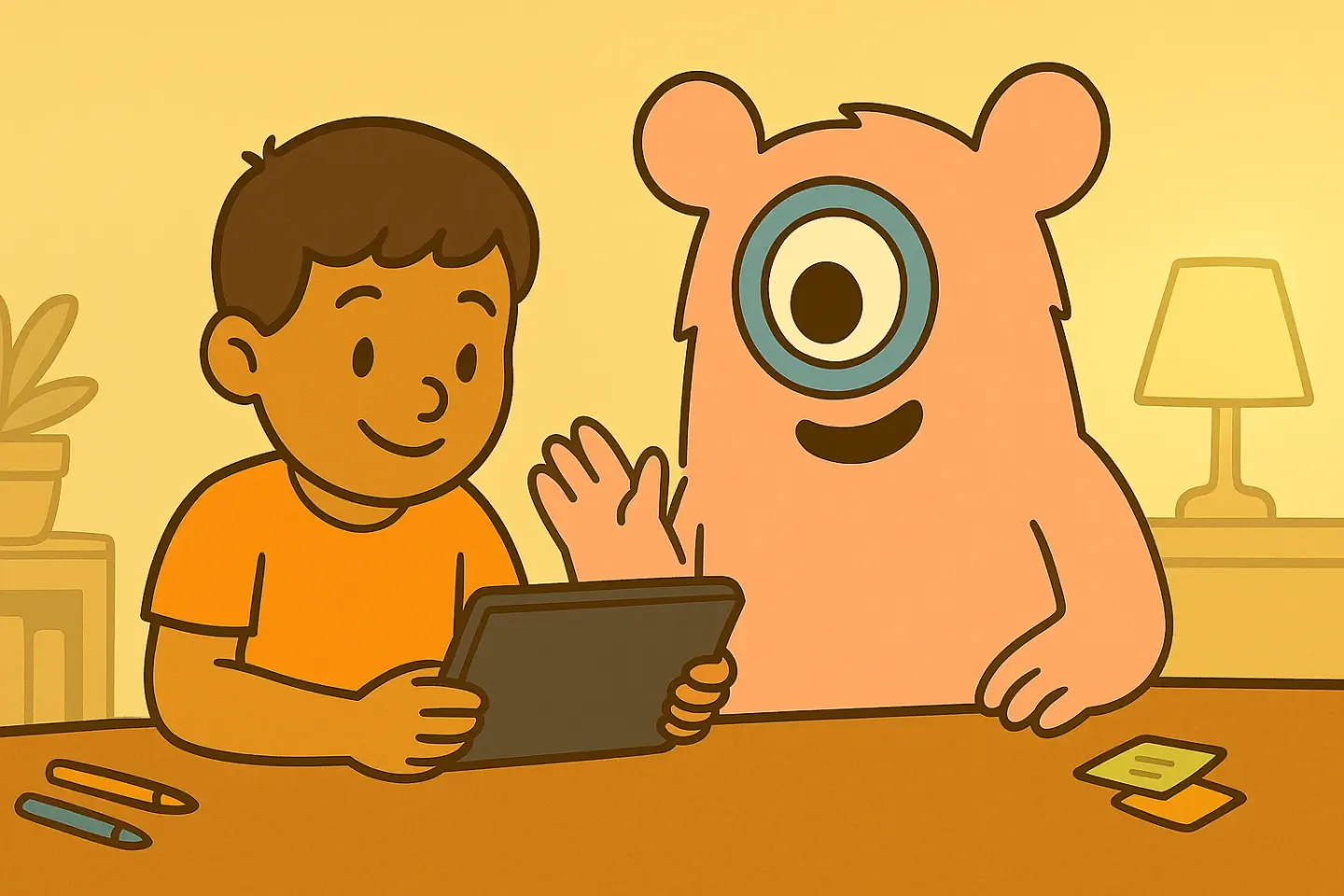Harnessing ADHD Creativity in Math Problem Solving for Kids
TL;DR:Kids with ADHD often struggle in math because of working memory and attention demands - but they also often carry creative strengths that go unused. By inviting multiple entry routes, giving choice, movement and visual formats, and celebrating creative approaches, we turn ADHD creativity into math problem-solving power rather than a roadblock. With purposeful routines, hands-on tasks and meta-thinking prompts, teachers and parents can help children with ADHD transform math from “hard” into “inventive”.
When you have a child in your class or at home who has Attention‑Deficit/Hyperactivity Disorder (ADHD), conventional math teaching methods often fall flat. Yet at the same time, many kids with ADHD come wired for creativity, divergent thinking and fresh problem-solving approaches. This article is written for teachers and parents who want to shift from “helping them catch up” to “helping them shine” - tapping into that ADHD creativity in math problem solving so that it becomes a strength rather than just a challenge.
Why ADHD and math often feel like a tough pair
Most of us are familiar with how ADHD can impact mathematics: issues with sustained attention, working memory hiccups, impulsivity - all well documented in research. For example, children with ADHD solved fewer word problems correctly and struggled especially when tasks required updating of working memory.
Another study noted that children with ADHD show reduced math-problem-solving skills and lower conceptual math understanding, linked to working-memory and executive-functioning difficulties.
In practice, this means kids with ADHD might get the concept of division, but lose track of the multi-step process, skip a key step, or start mixing up operations because the internal “task manager” is overloaded. But here’s the turning point: that same brain wiring often brings gifts of creativity, divergent thinking and fresh insight - which we can harness for math, not just compensate for.
The strength side: creativity and ADHD
Research is increasingly showing that ADHD isn’t just about deficits - it has strengths. In particular, divergent thinking (the ability to generate many ideas) tends to be higher in people with ADHD traits. A study of divergent thinking, creative fluency and originality found that higher ADHD symptom scores predicted higher scores on divergent thinking tasks.
For math educators and parents, this means: when we invite creative thinking - “What if we changed the rule?” or “Can you find another way to get the answer?” - we engage the ADHD learner’s brain differently. Instead of drilling them into compliance, we spark their inventiveness, curiosity and ownership of the math process.

Key principles for harnessing ADHD creativity in math
To make this strength-based approach work, here are four guiding principles.
- Invite multiple entry-points and flexible strategies. Don’t force one rigid algorithm. Give tasks like “solve this equation, and then show me a second way you could have done it” or “what if X were negative - what changes?” This leverages divergent thinking.
- Use visual, hands-on and movement-friendly formats. Kids with ADHD often respond strongly to non-traditional formats. Incorporating manipulatives, visual models or short movement breaks during problem solving helps sustain engagement and channel energy constructively.
- Chunk the problem-solving process and externalise executive steps. Breaking tasks into smaller, visible steps - “Plan -> Compute -> Check” - helps offset the executive-function load. One study found metacognitive skills (awareness of one's thinking) improve math performance in students with ADHD when the process is externalised.
- Celebrate creative approaches and process over only correct answers. Encourage unusual methods, multiple solutions or “mistakes that led you somewhere interesting”. This builds confidence - and confidence leads to risk-taking, which leads to richer problem solving.
It’s easy to assume that creativity and structure can’t coexist - but for ADHD learners, the two actually fuel each other. The structure provides cognitive stability; creativity keeps engagement alive. The most effective classrooms alternate between open-ended discovery and predictable routines so that students’ creative energy doesn’t spill into chaos but channels into insight.
Concrete strategies for the classroom and home
Here are six practical ideas for teachers and parents:
1. “What if” prompts
After solving a standard problem, ask: “What if the denominator were twice as big? What happens? Why?” Or “What if you used plus instead of minus - what changes?” These prompts invite the ADHD learner to explore alternative paths rather than just complete the task.
2. Two-way solve and reflect
Have the student solve a problem one way and then re-solve it a different way (e.g., graphic model, algebraic, spoken explanation). Then ask: “Which way felt easier? Why?” This invites meta-thinking and gives the creative ADHD brain more routes to engage.
3. Movement breaks and tactile tasks
Start a word-problem session with a short physical activity (jumping, stretching, number-line hops). Then present the problem using blocks, or ask the student to draw a diagram on floor tape. This helps regulate attention and channel energy before cognitive work begins.
4. Choice and ownership
Let the student pick the context or theme of a word problem (e.g., sports, graphic novel, space travel). Giving control over the context taps creative interest and builds motivation - especially for ADHD learners who thrive when they own part of the task.
5. Quick wins + creative extension
Start with a short, manageable problem (so confidence builds), then extend it: “Now pick one part you want to push further - can you make it trickier, or make a mini-game out of it?” This balances grit with growth, especially important for ADHD learners who can lose momentum if they hit a wall early.
6. Math games and digital exploration
Technology, when used mindfully, can be a powerful bridge between ADHD creativity and structured math learning. Interactive math games and apps provide instant feedback, visual models, and playful repetition - all of which help sustain focus without overstimulation. Digital tools like Monster Math, and others encourage students to explore patterns and problem-solving through experimentation rather than rote drills. For children with ADHD, this kind of guided exploration feels like play but builds real conceptual understanding, turning bursts of curiosity into lasting learning.

Conclusion
Creativity isn’t a distraction from math learning for ADHD kids - it’s their way in. When classrooms give room for imagination, experimentation, and reflection, what once looked like “off-task” behavior can become signs of mathematical curiosity. By viewing ADHD not as a barrier but as a different learning rhythm, we can design lessons that reward flexible thinking, honor effort, and let students express understanding in multiple ways. Every burst of energy, every unexpected question, every doodled idea can become the start of deeper problem-solving - if we choose to see it that way.
FAQs
Q: Can kids with ADHD really be creative in math, even if they struggle with focus?
A: Yes. Research shows strong links between ADHD symptoms and divergent thinking - many children with ADHD bring unusual ideas and flexibility of thinking that can be powerful in math contexts.
Q: Isn’t math about getting the correct answer, not creativity?
A: While correctness matters, problem-solving is richer when we value the “how” and “why” as well as the “what”. For ADHD learners, focusing on thinking can engage them deeper and build persistence. Creativity fuels thinking.
Q: What about executive function problems - won’t they block creativity in math tasks?
A: It’s true that working memory and executive functioning challenges are common in ADHD and affect math. But by externalising steps, using manipulatives, and giving choices, we can reduce that barrier and let creativity flow despite those hurdles.
Q: How often should I use creative prompts vs. regular practice?
A: A balanced approach works best. Use regular foundational practice (so fluency is maintained), and weave in creative thinking prompts once or twice a week. Over time the student will begin to recognise their own creative strategies and apply them across math tasks.
References
- Re, A. M., Lovero, F., Cornoldi, C., & Passolunghi, M. C. (2016). Difficulties of children with ADHD symptoms in solving mathematical word problems. Research in Developmental Disabilities, 51-52, 326-335. https://iris.unito.it/retrieve/handle/2318/1634673/322910/proofs%20RDD%202016.pdf
- Gaye, F., et al. (2023). Working memory and math skills in children with and without ADHD. Neuropsychology. https://psy.fsu.edu/clc/Publications/nihms-1934140.pdf
- Stolte, M., et al. (2022). Characterizing creative thinking and ADHD symptoms: A study on divergent thinking. Frontiers in Psychiatry, 13, 909202. https://www.frontiersin.org/journals/psychiatry/articles/10.3389/fpsyt.2022.909202/full
- Tsampouris, G., et al. (2022). Metacognitive strategies related with logical–mathematical thinking of students with ADHD. Mathematics, 10(11), 1810. https://www.mdpi.com/2227-7390/10/11/1810
